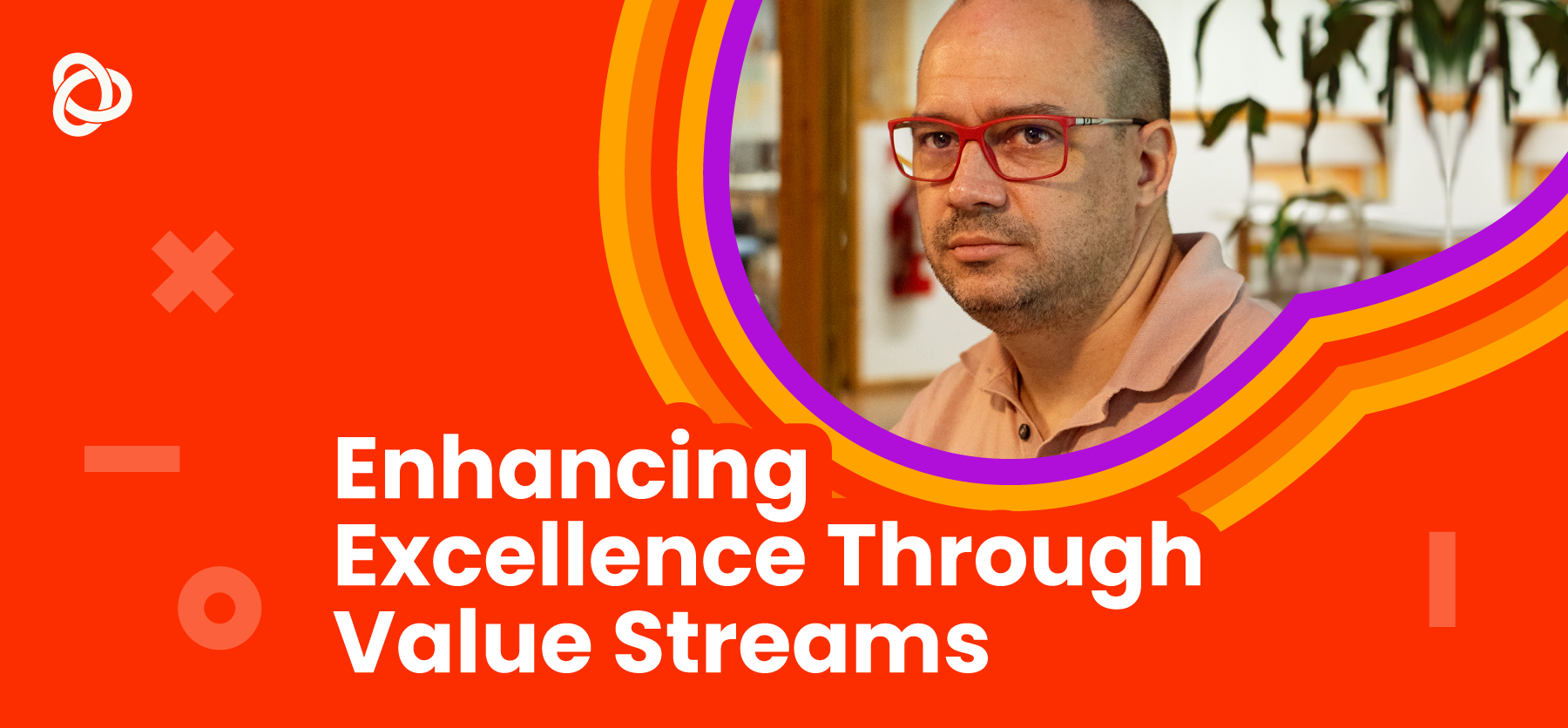
Enhancing Excellence Through Value Streams
Dec 27, 2023
The development of Value Stream drives business through customer satisfaction and adds value to the entire process of delivery. One of the main sets of actions to take in order to empower the workflow is managing the value stream associating the C-Suite with Agile and DevOps teams.
What are the benefits of encouraging Value Streams?
- Optimize delivery
- Develop higher-quality customer experiences
- Inspire powerful reviews and referrals.
- Improve competitiveness
- Increase revenue
- Create customer-centric products
What exactly are value streams?
A superior answer is shared by Omar Hraste, one of our Product Owners and expert in Agile Metrics.
In essence, they represent the end-to-end sequence of activities that create, deliver, and ultimately provide value to the growth partner. It is a continuous process that is being changed, new will be added/detected based on insights from our growth partners throughout the team member. Having a structured process to improve through Value-Streams is crucial for systematic and sustained enhancement.
Metrics, a relevant set back
A superior Value Stream improvement is made when metrics are provided. Some examples are the following:
- Measuring the QTY of bugs and reducing that number, improves the QA’s Value Stream
- Measuring and reducing the QTY of tech debt gives the team more time to innovate and consequently improves the Ability to innovate Value Stream.
- Having a Definition of DONE improves the Communication’s Value Stream
- Implementing a RoadMap gives more visibility to the customer about the next steps in delivering and internally to the team, consequently improving Planning’s Value Stream.
- Having an SLA increases the Trust’s Value Stream.
Omar adds that “it's within these streams that the real power to transform and elevate our service resides”.
The “How to” for optimized use of value streams
Presenting the step-by-step guide for implementing a method and processes to improve through value streams:
1 - Define the Value-Stream
- Identify and Map
- Metrics and KPIs
It is well known that each client has a unique value-stream map that accounts for their products, projects, and stakeholders. Therefore, identify and map value streams are key:
Before starting any project, it's crucial to distinguish the type of work the team will be involved in. There are two main types: project and product, and usually, a hybrid of both is used. However, it's essential to determine the project's style as it helps us prioritize the value streams, which ultimately leads to a clear map definition.
Implementing a metric is time-consuming and the way out is a classification using impact mapping, starting from value streams to specific metrics.
Create a roadmap for implementing short, mid, and long-term metrics, and define the KPIs for each.
2 - Identify Stakeholders
- Stakeholder Map
Identify and involve key stakeholders who contribute to or are affected by the value stream.
3 - Map the current State
- Create a Dashboard
Each metric affects different Stream-Values and some metrics affect other metrics, therefore the metrics Map needs to be analyzed in parallel.
4 - Identify opportunities 5 - Improvement Plan 6 - Follow the plan and iterate
Some of the reasons to consider Stream Values plan are to empower the team to deliver value, focus on solutions, optimized processes and timings, encourage learnings and progress, and drive better funding models. From the sequence of defending, building, validating and releasing, the Stream Values set of actions grant an agile and efficient workflow.